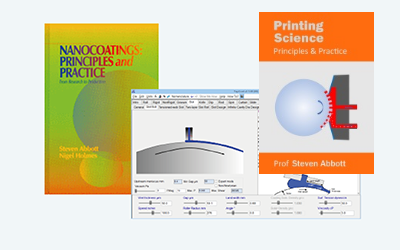Modulus from Bending
Quick Start
Suppose you have a thin sample of material which is much too weak to put into a tensile tester to measure its modulus, and you have no access to a fancy nanoindenter. No problem. Cut out a piece of thickness H and estimate its density, then let a length L hang freely in space. Now measure the distance, D, the end has drooped. Put the values into the app and you have the modulus.
Modulus from Bending
Sometimes you need to measure the modulus of a thin film. Putting it into a tensile tester is not practical. Those who have access to a nanoindenter might be able to get a good value by analysing the loading and unloading curves. For the rest of us a really simple yet accurate method can be used. Simply measure how much bending there is from a strip of a known thickness and length!

The formula is simple. The modulus, E, for a film of thickness H and density ρ which bends by distance D over a length L is given by:
`E=(1.3L^4ρg)/(H²D)`
Obviously any curl in the sample before measurement adds confusion. If you can't obtain a curl-free sample, measure it both ways up and take an average! Note the L4 dependency; this means that you must measure L with some accuracy. But it also means that you have a lot of freedom to get a nice measurable droop simply by changing L. It's also a good idea to measure D at different L values to increase your overall accuracy.
If you prefer to measure the droop of a sample supported at both ends, use L as the half-width and divide the calculated E by 8.


